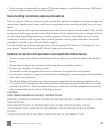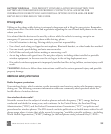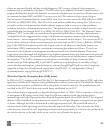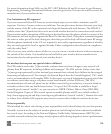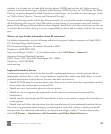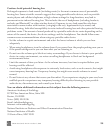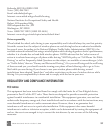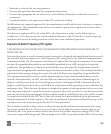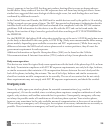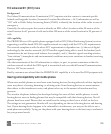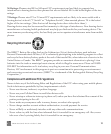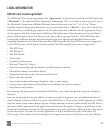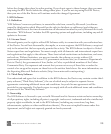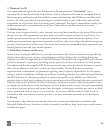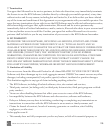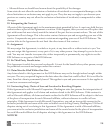
TWOm User Guide - R1.0.2 - October 7, 2010 109
tissue), exposure to low-level RF that does not produce heating effects causes no known adverse
health effects. Many studies of low-level RF exposures have not found any biological effects. Some
studies have suggested that some biological effects might occur, but such findings have not been
confirmed by additional research.
In the United States and Canada, the SAR limit for mobile devices used by the public is 1.6 watts/kg
(W/kg) averaged over one gram of tissue. The FCC has granted an Equipment Authorization for this
wireless device with all reported SAR levels evaluated as in compliance with the FCC RF emission
guidelines. SAR information for this device is on file with the FCC and can be found under the
Display Grant section of http://www.fcc.gov/oet/fccid after searching on FCC ID APYNAR0066 for
the PB20ZUM.
For the PB20ZUM, the highest SAR value when tested for use at the ear is 1.29 W/Kg and when worn
on the body, as described in this user guide, is 0.755 W/Kg. (Body-worn measurements differ among
phone models, depending upon available accessories and FCC requirements.) While there may be
differences between the SAR levels of various phones and at various positions, they all meet the
government requirement for safe exposure.
Additional information on Specific Absorption Rates (SAR) can be found on the Cellular
Telecommunications & Internet Association (CTIA) website at http://www.phonefacts.net
Body-worn operation
This device was tested for typical body-worn operations with the back of the phone kept 2.0 cm from
the body. To maintain compliance with FCC RF exposure requirements, use only belt-clips, holsters,
or similar accessories that maintain a 2.0 cm separation distance between the user’s body and the
back of the phone, including the antenna. The use of belt-clips, holsters and similar accessories
should not contain metallic components in its assembly. The use of accessories that do not satisfy
these requirements may not comply with FCC RF exposure requirements, and should be avoided.
Emergency calls
Never rely solely upon your wireless phone for essential communications (e.g., medical
emergencies), if it can be avoided, since a wireless phone requires a complex combination of radio
signals, relay stations, and landline networks for its operation. Consequently, emergency calls may
not always be possible under all conditions on all wireless phone systems. Your wireless phone,
however, may sometimes be the only available means of communication at the scene of an accident.
When making an emergency call, always give the recipient all necessary information as accurately as
possible. Never terminate an emergency call until you have received clearance to do so.



